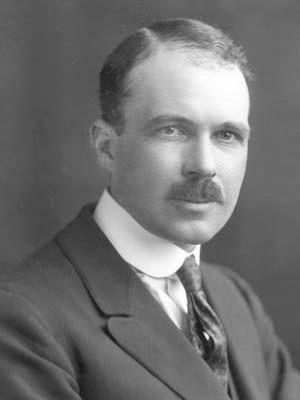
3 minute read
Lodge Buildings
The following is abbreviated from a 1960s paper by Bro. Dwight Smith Past Grand Master of Indiana:
I have no patience with the fenced-in concept of Freemasonry which seizes upon one facet of our Craft and magnifies it out of proportion to its importance. The beauty in a mosaic is in the whole —not in a single, tiny, irregular piece of colored glass. That is the picture we should be always seeking to convey to our candidates and our Brethren. When our single-track minds are able to see in Freemasonry no more than a temple or institution, or a service club whose members wear aprons, or a vehicle for raising funds for someone's pet hobby then we are failing in our job. The history of one Lodge in particular haunts me. During years in which membership averaged about 45, their expenditures for local Masonic relief ranged from $10 to $25 per month —and that, in those days, was a sizable sum. But they did the work of Freemasonry in the community. Then the fat years came. They erected a large temple, and settled down to decades of sleep. Nothing worth mentioning has happened since.
Advertisement
Now do not try to tell me the neighbourhood deteriorated, because it has not. And do not try to argue that if the Brethren just had a parking lot, and air conditioning, and no steps to climb, all would be well. It isn't that simple. The unpleasant fact is that the real Lodge died three-quarters of a century ago—only the dry shell remains. It died because the Brethren were interested only in material Things, and when they achieved that which they coveted (ie. their building), there was nothing further to do.
For however pleasant and attractive a
new building may be, it guarantees
nothing. I have seen temple building projects which served as an open door to renewed interest, activity and zeal, and which gave the Brethren a new conception of the work of Freemasonry. And then I have seen the Brethren nestle down in their comfortable new quarters do nothing except pay the insurance premiums, watch for roof leaks and see that the walls were repointed. Most lodges met in rented quarters (ghastly thought!) above the hardware store, with no air conditioning and no paved parking lot. But does it ever occur to us that those modest physical facilities may have had a direct relationship to the prestige and effectiveness enjoyed by the Craft to an extent that never has been equalled? Perhaps the
Lodge was doing the work of Freemasonry in those days and not pouring all its energies and substance into the maintenance of a costly plant. A materialistic Freemasonry is a Free-
masonry with no message, no challenge,
no power. It is our own fault that we have gone overboard for materialism. We tell our Brethren how Freemasonry's grand design is to erect a moral edifice within the heart of a man, and then we assure him that all he has to do is to write a check and that will discharge his personal and charitable obligations to the Craft. Bro. Conrad Hahn states: "The more we have organized Masonic groups and activities, the more we have institutionalized our benevolent projects and charity, and the more we have set up programs and criteria for evaluating them, the more concerned and disturbed we seem to become over the results of our fraternal activities. May it be that we have concentrated our energies so largely on things, on the means for achieving our goals, on techniques rather than ends, that we have bound up the true spirit of Freemasonry to the point of ineffectuality?"
Beautiful buildings have not solved our problems; they have only created new ones.
Editor: How many lodge building were erected in the west (and possibly the whole central belt) of Scotland between 1900 and 1920? A great many and today they are causing major financial burdens on lodges to the point that it’s now their major focus. How many lodge histories talk more about the new builds than about what the Craft really is. The materialistic view is difficult o leave, but we must if we want freemasonry to return to its original philosophy and that can be achieved by brethren thinking not about what they get out the Craft, but what they can do for the Craft.









